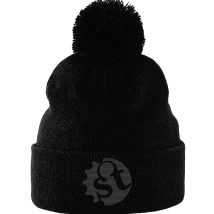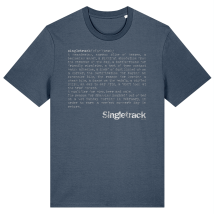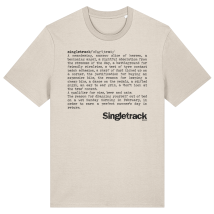There’s a lot of rumours circulating about new hub standards with 148×12 being pushed for rear hubs (and not just for 29ers) and we’re hearing there’s likely to be a new front standard too. So here’s the original story from June’s Trek launch about the thinking behind 148.

If you’ve been following our Twitter commentary on this over the past few days you will already know the basics, but here’s some more detail. If you want to get the early bird news on what’s new in small 142 character pieces them make sure you follow us over @singletrackmag
29rs are great.. No really! They do a great job at doing what they are designed to do, which is rolling over stuff efficiently. But one of the reasons (just one – there are others) that 29rs are not really breaking through into more gravity disciplines is because of the lack of wheel stiffness. You see the longer the spokes get the more ‘wibbly’ the wheel becomes – which is less to do with spoke length (bigger wheel, longer spokes) than it is to do with the angle made by the spoke and the hub. The more acute the angle the stiffer the wheel becomes. Think of a pole propping up a leaning wall. If you have the bottom of the pole close to the wall it’s not going to offer much support. Get that base further away, and create a more acute angle between pole and floor and the pole starts to do it’s job of supporting the wall properly. Building 29r wheels on standard 142mm hubs actually lessens the acuteness of that angle and so 29r wheels end up being less stiff than their smaller brethren. But to get the base of the spoke further out requires a wider hub, and that’s exactly what Trek have done by teaming up with SRAM to create the BOOST 148 system, specifically to stiffen 29r wheels.
But it’s more than just a hub thing. A wider hub means wider stays on the bike (which means new bikes only – it’s not retrofittable on your current bike), but it also means a new crank spider too. Before anyone starts to groan, there is a very good reason for this and it’s is all to do with the Q Factor of the cranks.
If the hub widens then the chain line moves out – that’s going to cause problems at the front of the bike unless you also move the cranks out too. If you do that then the QFactor changes. QFactor is the distance between the inside faces of both crank arms and believe me, monkeying around with that can seriously change the way the bike feels, even if it’s just a few mm. If you’ve ridden a Fat Bike you will understand this as the BB shell on those bikes needs to be much wider and so the QFactor of the cranks increases a lot.
So the challenge was to make a wider hub but retain the existing QFactor and Trek’s solution was to work with crank maker SRAM to produce a crank that retains the same QFactor but pushes the spider out by 3mm. So your feet stay in the same place but the chainrings move out by 3mm and the chainline is kept all lovely.
Now, there’s an obvious question that will have come to mind of many of you by now. Why 148 when there’s already a 150 standard in DH bikes. Why not just modify that standard for 29rs? Well, the answer we’ve been given is that the 150 standard is actually more like 157 when you take into account the use of dropouts used in that system. Working with a hub that is affectively 157mm wide would make maintaining the Qfactor at the front of the bike pretty much impossible. There’s also the fact the chainstays are so much wider on the 150 system that it starts to impact on the clearance of the crank arms – not so much an issue with DH bikes with shorter 165mm cranks but it starts to get really tight on standard 175mm cranks. So, no.. this is not just a ‘New standard’ for the sake of it. It’s a total rethink of how to make stiffer wheels on 29rs. Yes, it’s unfortunate that you will need a) A new bike with wider stays and b) a new crank spider, but Trek claim to have looked at all possible solutions to 29r wheel stiffness and have settled on this as the best compromise.
As Trek’s John Riley just told me as I was writing this, “We hate new standards as much as everyone.”
New standards mean new tooling and new manufacturing processes and that is unbelievably expensive, even for a company like Trek.
So, if you want a stiff rear wheel on your 29r you will need to buy a Trek? No! Trek have made BOOST 148 an open standard. What that means is that they are not protecting it with patents and stuff and the entire industry can use it if they want to. Trek have already been talking to many hub makers and crank producers (including Shimano, RaceFace and FSA) already and we’ve been told that most crank manufacturers are all ready to put their own BOOST 148 compatible cranks on the market very soon.
One question we asked was why the collaboration with SRAM and not Bontrager? Bontrager is the Trek in-house wheel manufacturer. The answer may already be apparent but Trek needs to work with someone who could also design cranks. Bontrager don’t do cranks – SRAM do.
Another was why not roll this technology out to 27.5 wheels and make them super stiff? The answer there was that 27.5 wheels are already pretty stiff and this new standard would make only marginal improvements. For 29rs there was a distinct need for greater stiffness and this system brings the stiffness of 29r wheels in line with that of both 27.5 and even 26 wheels.
And what about the front wheel? Here it gets more complicated and mostly more expensive and although Trek are not ruling it out, it would need a bigger shift in the industry to make wider forks. That’s a whole different project but it is something Trek are working on.
Boost 148 equipped Remedys will be available from July.













Yay! Another new “standard”. Just what the bike buying public wanted…
Would an increased flange diameter bring the spoke lengths and angles back to similar values as a 26″ wheel, without widening the hub?
But that wouldn’t sell new bikes would it?
I like a wide flange.
We discussed the bigger flange issue last night. The short answer is to get the same angles the flange would need to be really huge and that would add a lot of weight to the wheel. The Boost148 adds effectively a 6mm ring of aluminium in the hub. The weight of the wheel is effectively unchanged.
No conspiracy to sell you more bikes. No really! 🙂
Whyzat gbss? You only got a short spoke?
Isn’t there a lot more leverage with a bigger wheel as well that makes it easier to flex the seat and chainstays? I am sure that this has more effect on flex than the width of the hub.
It will just end up with a standard 135 hub with adaptors, just like 142.
I’m finding it really hard to get excited by this. Maybe it’s because in every ad run by Trek or SRAM, they’ve ‘perfected’ something, or are ‘doing can’t’.
Surely moving on perfection is an impossibility? Which means we’re being told a few porky-pies down the line.
Bontrager certainly used to make cranks.
They were Truvativ made though – now part of Sram.
I love my Remedy, but Trek stuff always feels a bit ‘designed by committee’.
A new hub standard to go with your proprietary rear shock mounting, rear axle and custom nose-diving DRCV forks. Lucky us.
Can’t believe Mark raised the issue of “We discussed the bigger flange issue last night.” without a double entendre.
So the difference in deflection is a whisker over 1mm? Seems pretty insignificant…
If you want a double entendre I’ll give you one.
We we’re talking about this the other day about big wheelers – I love my long low slack 29er, but it’s a wheel eater currently, and the wheels are the weak link in it all – Carbon rims seem to help (if you can afford them, if you can’t don’t try them , I have coveted a pair ever since) but it’s the hub that will make the most relatively affordable difference I guess.. as to standards, The Bike industry should just stop saying it, and then people can stop whining about new good stuff that won’t retrospectively fit a bike from 10 years ago, it is what it is – the Trek hub won’t fit in to my bike, boo hoo, they shouldn’t make it then.
On that note though, the heavily dished rear wheel has always been the weak link in the wheel set-up, which is emphasised by the extra distance/leverage of the 29er rim from the hub.
If they are having a pop at solving this particular problem, do you think it’ll carry over onto smaller wheels (which would make sense, especially in DH).
Going the other way, would it not make more sense to look at internal or hub gear systems, which have a host of benefits including dishless rear wheels? Or would that not be economically viable due to the number of derailleur users out there?
Claiming it’s ‘perfect’ also seems a little far-fetched…
More than a Whisker? How many kittens is that?
Could Trek not provide replacement seat/chain stays?
Everyone loves to hate new standards, but Trek didn’t say this had to be an industry-wide standard. They said it’s theirs and that it’s better, they certainly don’t want to put obstacles in the way of people making a purchase unless they see a genuine advantage. All that said, I can’t help wonder if the existing 150 axle width could have could have been pressed into service.
[i]And what about the front wheel? Here it gets more complicated and mostly more expensive and although Trek are not ruling it out, it would need a bigger shift in the industry to make wider forks. That’s a whole different project but it is something Trek are working on.[/i]
Very kind of Trek not to rule it out. Jones Bicycles have been running 135mm front hubs/wheels for an age, but then Jeff’s been doing lots of things that people are just about catching up with :O)